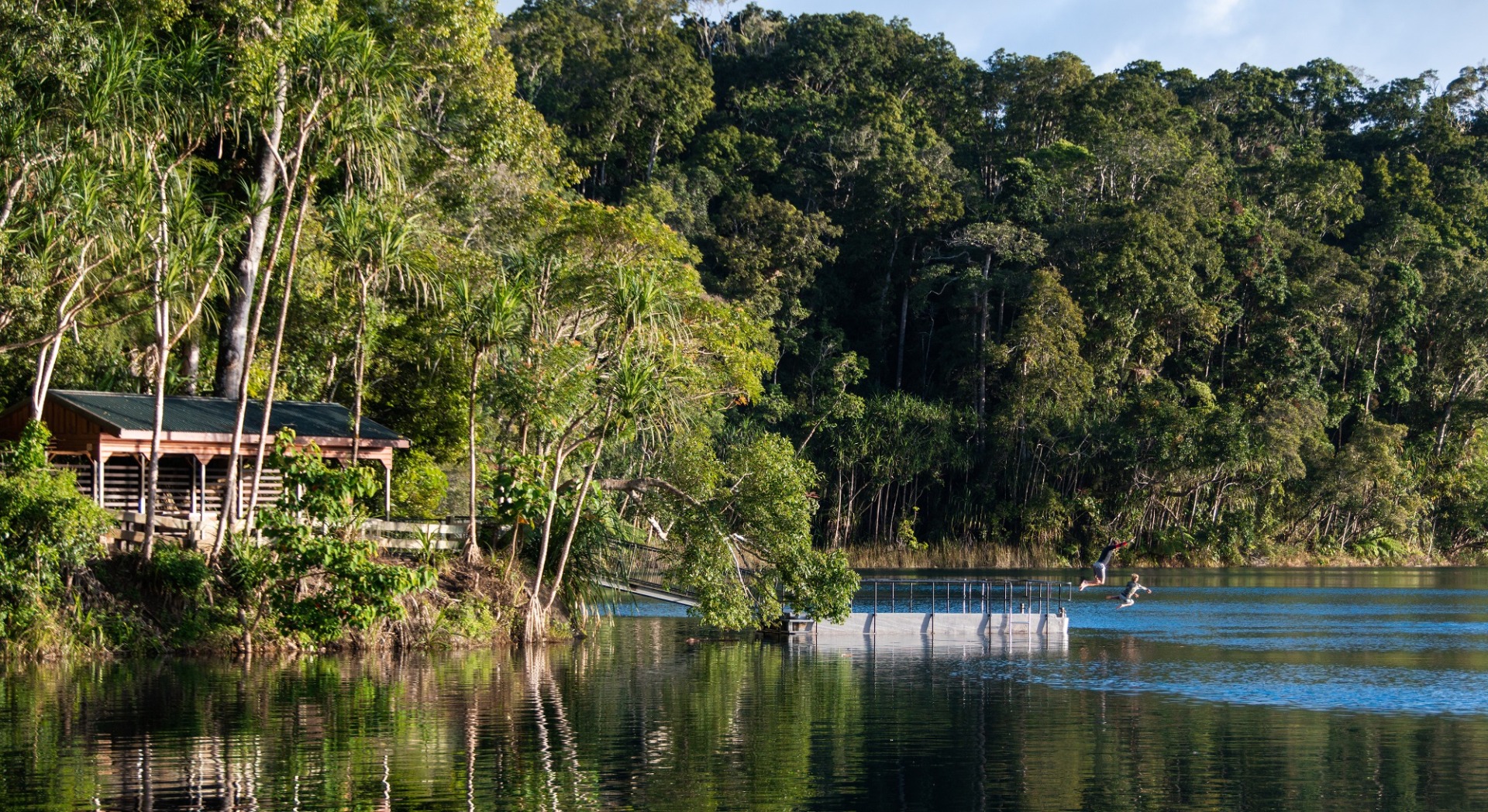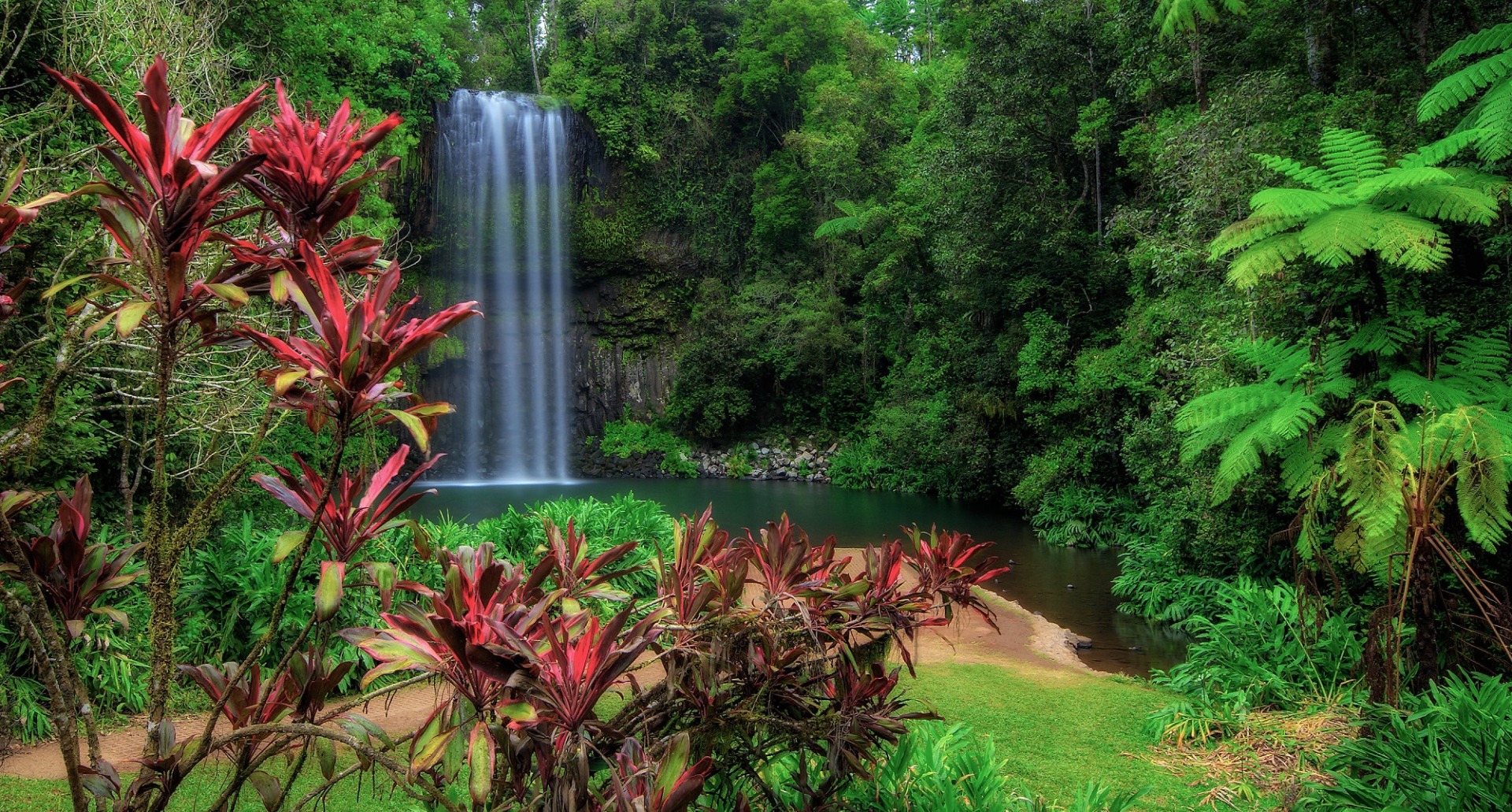By John Pedler
Published: Wednesday, June 28, 2023
The Great Barrier Reef is one of Cairns’ major drawcards, but Far North Queensland has another region recognised internationally for its beauty and ecological significance.
Inland from Cairns, the Atherton Tablelands are a treasure trove of ancient rainforests, unique wildlife and striking geological features. It’s an area of such environmental importance that much of it is included in the UNESCO Wet Tropics World Heritage Area.
We take a look at some of the region’s major attractions.
Blasts from the past
These days the forests and fields of the Atherton Tablelands are scenic delights, but this wasn’t always the case. About 10,000 years ago, red-hot magma bumped into groundwater and blasted a couple of huge holes in the countryside.
Thankfully, this local hotspot has simmered down over the past few thousand years. The two craters created by this volcanic mayhem are the central features of Crater Lakes National Park. Lake Eacham is quite simply a touch of paradise. Its cool clear waters are encircled by lush tropical vegetation, making it one of the country’s most idyllic swimming spots.
A lawned picnic area, barbecues and pretty walking trails complete the picture for a great day out.

Nearby, the larger Lake Barrine is similarly stunning. The lake is home to a 93-year-old teahouse, which offers meals, Devonshire teas and superb views across the water-filled crater. The teahouse owners also operate boat cruises.
Further afield, the crater at Mount Hypipamee has a different volcanic backstory. Gas rising through a crack beneath the earth’s surface expanded and exploded, showering the area with great lumps of granite. The blast created a 70m wide and 136m deep vent which is more than half full of water.
Vertigo-prone visitors might choose to avoid peering down the sheer crater walls from the viewing platform.
Chasing waterfalls
Just beyond the town of Millaa Millaa, three waterfalls make up the 17km-long Waterfall Circuit.
Ellinjaa Falls is a delightful spot. It’s just a short walk from the car park to the bottom of the cascades, where water tumbles over volcanic rocks.
Visiting the base of Zillie Falls can be a bit more of an adventure. It’s easy to reach the viewing area at the top of the falls, but for the full impact of Zillie’s thunderous roar, you’ll need to scramble down a rough, narrow path through the jungle to the plunge pool. On a wet day, the muddy trail may see you unintentionally experience the thrill of the luge.
Millaa Millaa Falls is picture-perfect, which is why it appears on so many postcards and brochures. Set among a dreamy backdrop of ferns, the curtain-like falls plunge 18m to a pool below. The lawned area at the base is popular for picnics.

Rainforest riches
In the mountains north-west of Cairns, the rainforest village of Kuranda has been a travellers’ hotspot for many years.
Keen shoppers will be drawn to the arts, crafts, clothing and local produce at the Kuranda Original Rainforest Markets and Kuranda Heritage Markets.
Travelling lepidopterists – and the rest of us – can head to the Australian Butterfly Sanctuary, home to some of the tropics’ most colourful residents. More than 1500 butterflies, including the stunning red lacewing, electric-blue Ulysses and the multi-coloured Cairns birdwing, flit among ferns and palms in a giant aviary.
Nearby, Birdworld Kuranda showcases a kaleidoscope of parrots, macaws and cockatoos, as well as waterbirds and endangered cassowaries.
There and back
Built in the late 1800s to service mining communities in the tablelands, the Kuranda Scenic Railway is an engineering marvel and one of the country’s most spectacular rail trips. Winding into the ranges, it travels beside sheer ravines, crosses towering trestle bridges and passes through hand-hewn tunnels. The views back towards the coast are breathtaking.

On the return trip to Cairns, soar above the rainforest canopy aboard the Skyrail Cableway. There are a couple of stops en route, including Barron Falls Station, where a short boardwalk leads to the multi-level Barron Falls. If your timing’s right, you can spot the train travelling on the opposite side of Barron Gorge.
The second stop is Red Peak Station, where there’s an opportunity to stroll along a boardwalk through pristine rainforest.
Great care was taken building the cableway through this delicate landscape. No new roads were created in Barron Gorge National Park, and natural clearings were used for tower and station locations.
Workers hiked into the worksites each day after sterilising their footwear and equipment to prevent contaminating the forest.
Heavier equipment, cement and prefabricated tower sections were flown in by helicopter, each item dangling at the end of a long cable to prevent wind damage from the rotor blades.
The result of these endeavours is a unique rainforest experience, combined with dramatic views of the surrounding countryside.